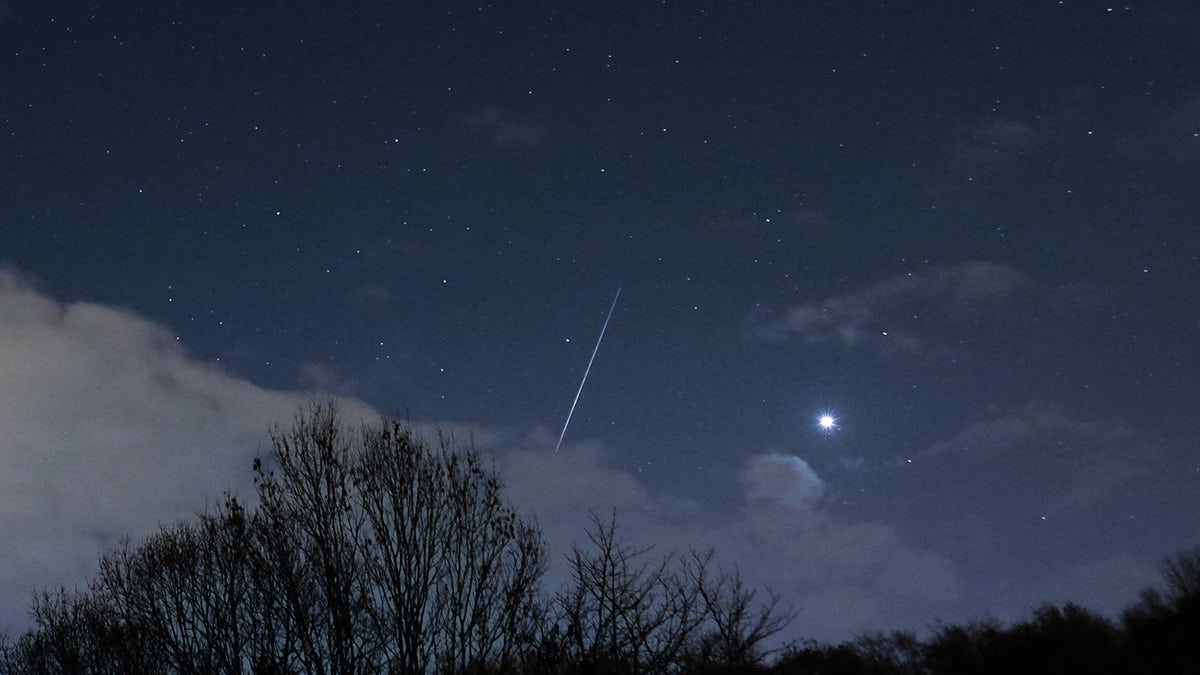Fox News Flash top headlines for September 30
Fox News Flash top headlines are here. Check out what's clicking on Foxnews.com.
Skywatchers are in for a treat this week as the Draconid meteor shower appears in the sky.
“The shower is active between October 6 and 10,” explains the EarthSky website, noting that its peak is expected to be on Wednesday. “This shower favors the Northern Hemisphere, but Southern Hemisphere observers might catch some Draconids, too.”
HOW DO NASA ASTRONAUTS VOTE IN SPACE?

The Geminid meteor shower lit up the sky over Saltburn By The Sea, United Kingdom, on Dec. 14, 2018. (Ian Forsyth/Getty)
“This is one shower that’s best to watch at nightfall or early evening, not after midnight,” EarthSky explains. “No matter where you are on Earth, watch as close to nightfall as possible.”
The meteor shower is the result of debris from a comet, according to NASA. “The Draconid meteors are caused when Earth collides with bits of debris shed by periodic comet 21P/Giacobini-Zinner (and that’s why this shower used to be called the Giacobinids),” explains the space agency’s Solar System Exploration Research Virtual Institute (SERVI) on its website.
Another meteor shower will occur in October with the Orionid meteor shower expected to peak early in the morning of Oct. 21. “The expected peak (under ideal conditions) is about 20 visible meteors per hour,” explains NASA. “However, according to the International Meteor Organization the strength of this shower has been varying from year to year and sometimes has several peaks across several days near the expected peak.”
CLICK HERE TO GET THE FOX NEWS APP
Other meteor showers this year include the Leonids and Geminds in November and December, respectively.
Follow James Rogers on Twitter @jamesjrogers





















